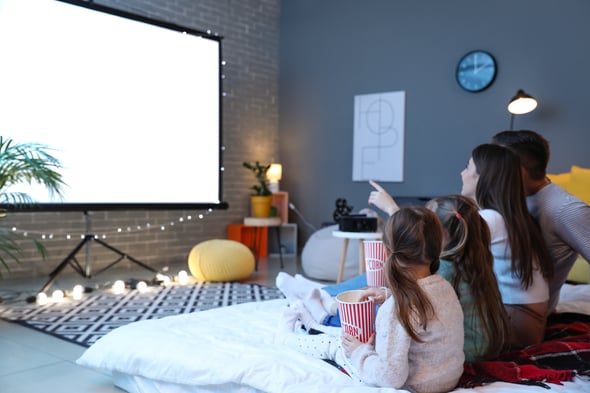7 Things To Consider Before Joining Online Coding Classes For Kids
With online coding classes for kids, you will surely reduce the burden of homework; however, there are several things to consider before getting your kid access to these classes. It is no good to think that your kid can skip their schoolwork anytime they want and join these classes.
Considerations for joining an online coding course
It can be a lot of fun to learn how to code on your own, but there are some things you should consider before you do. Here are a few things to think about:
1. Location – Are you comfortable learning from home? If not, is there a location where you can meet with the instructor once a week?
2. Time Commitment – Enrolling in an online coding course isn’t like taking a class at the college level. You will need to be able to dedicate at least two hours each week to the class.
3. Skill Level – If you’re new to coding, it can be helpful to start with a beginner course before moving on to more advanced lessons. This way, you’ll build the skills you need before trying more difficult material.
4. Motivation – Do you have what it takes to keep up with an online coding course? If not, be honest with yourself and find an alternative learning method that’s more accommodating for your schedule.
Reasons to take classes online
1. There are a lot of benefits to taking online coding classes for kids. For one, you can take them from anywhere in the world. This means that you can take them during breaks or dinner time, which is great for busy parents.
2. Another advantage of taking online coding classes for kids is that you can be sure your child is receiving the best possible instruction. Many online coding classes are run by reputable instructors, so there is always a high level of quality control.
3. Last but not least, many parents feel that their children learn better when they are actively engaged in the class instead of sitting passively in front of a screen. Taking online coding classes for kids encourages creativity and problem-solving skills, which are key principles of learning.
Coding with children
There are a number of things to keep in mind before joining an online coding class for children and Private tutoring in coding for kids. One of the most important considerations is the child’s age and developmental stage.
Young children are typically very enthusiastic about learning to code. However, some experts recommend waiting until the child is at least eight or nine years old before starting any coding classes. This is because young children’s brains are still developing and they may not be able to understand or complete the exercises in a coding class correctly.
Another thing to consider is the child’s attention span. Many parents report that their children excel when they’re taught coding using animated characters and visual examples. If your child struggles to focus on written instructions, it may be difficult for them to follow an online coding class.
In addition, make sure to research online coding classes that are available before enrolling your child in one. Some are better suited for older children while others are more appropriate for younger children.
Who will be teaching the courses?
If you’re considering taking an online coding course for kids, it’s important to know who will be teaching the classes. Quality online coding courses are typically taught by experienced coders who have a deep knowledge of the subject. This is important because you want the instructor to be able to explain the material in a way that’s both interesting and accessible.
Another important factor to consider when choosing an online coding course is the course syllabus. This document will outline what topics the students will cover and how they will be graded. It’s important to make sure that the syllabus accurately reflects what you’re expecting to learn. If there are any changes to the syllabus, be sure to note them on your enrollment form so you’re aware of them ahead of time.
Finally, it’s important to verify that the course provider is accredited and licensed by a relevant regulating body. This is important because you want to make sure that your son or daughter is being taught by qualified professionals. A verified provider will have all of this information available on their website.
What programs do students learn in? Are they hands-on and personalized for individual students?
When considering whether or not to enroll your child in online coding classes, there are a few things you should keep in mind. First, what programs do the classes cover? Are they hands-on and personalized for individual students? These days, many online coding programs offer computer programming courses that teach kids how to build their own websites, apps, and games from scratch. This is great for kids who want to learn programming from the ground up, but it can be difficult for those who would like to use the skills they’ve learned in class to create something practical.
Another thing to consider is cost. Are coding programs offered by the schools affordable? Many of these classes are priced at around $30 per week or less. In addition, many of these schools offer a money-back guarantee so that you can be sure that you’re getting a good deal if you decide to enroll your child.
So whether you’re looking for a program that will teach basic programming skills or one that will help your child create practical projects, look into online coding classes for kids before making a decision.
Does the student get help from a teacher and does it vary based on their learning style?
Before joining an online coding class for kids, it is important to make sure that the student is getting help from a teacher. Different kids learn best in different ways, so it is important that their learning style is taken into account. If the student is having trouble understanding concept explanations or code challenges, a teacher can be contacted to provide assistance. Additionally, if the student encounters difficulty with any aspect of the class, they should reach out for help as soon as possible. Online coding classes are designed to enable students to STUDY ON THEIR OWN, but if a student needs help along the way then it can make a big difference.
Conclusion
There are a lot of great coding classes for kids out there, and it can be hard to decide which to take. What do you want your child to learn? What’s best for their development? How much time will they have to spend working on the class materials? There are plenty of things to think about before signing up for a coding class, but hopefully, this guide has helped give you some ideas. When it comes to learning how to code, there is no one-size-fits-all answer – just choose a programming course that is right for your child and get started!



 Katie Brenneman is a passionate writer specializing in education, mental health, family lifestyle and online safety. When she isn’t writing, you can find her with her nose buried in a book or hiking with her dog, Charlie. You can follow her on
Katie Brenneman is a passionate writer specializing in education, mental health, family lifestyle and online safety. When she isn’t writing, you can find her with her nose buried in a book or hiking with her dog, Charlie. You can follow her on 



